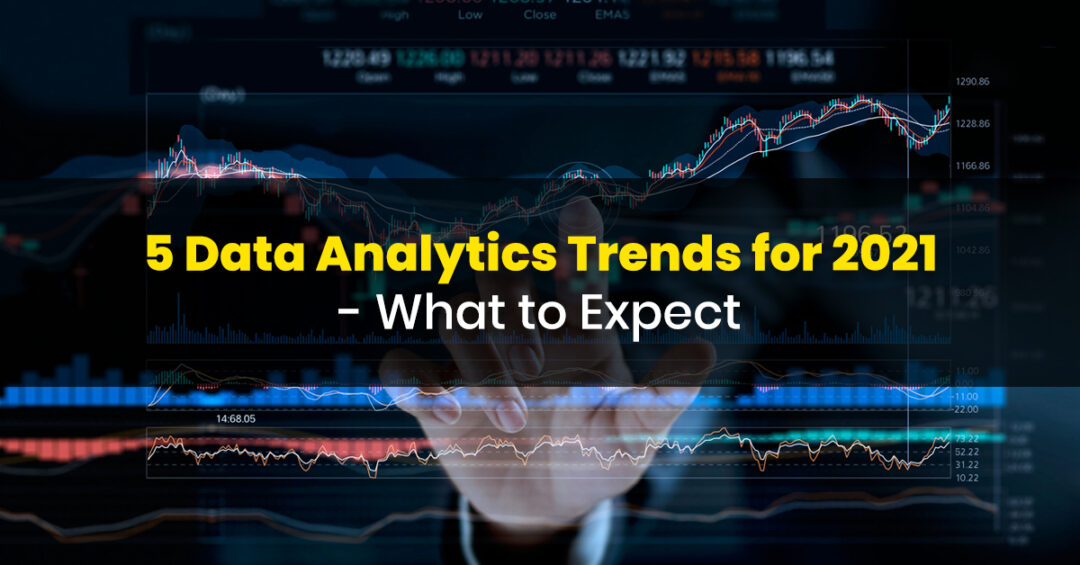5 Data Analytics Trends for 2021: What to Expect
Blog: Indium Software - Big Data
Twelve months ago, it was perhaps unimaginable that the adoption of virtual technologies and acceleration in digital transformation would happen so rapidly, including the swift migration to the cloud. Videoconferencing became a must-have in 2020 and was the primary mode of communication as remote working took center-stage, customer interactions were predominantly digital, and products and services were either fully or partially digitized.
On the data analytics front, generating real-time insights was an essential part of tackling the pandemic. In the year gone by, the concept of unified, data-driven business where anyone could get access to the required data insights gathered momentum, while the importance of data quality was acknowledged too.
We look ahead to the data analytics trends that are likely to dominate in 2021 and what you can expect.
Real-time data analytics here to stay
One of the key takeaways from 2020 was that companies must be able to respond instantaneously to unexpected issues, and real-time data and predictive analytics are the foundation for an agile response.
While past stored data is an asset, an increasing number of use cases require real-time data and real-time intervention to help mitigate costs and avoid potentially damaging consequences.
For example, identifying and preventing a network security breach could save a company hundreds of thousands (or even millions) of dollars. Real-time monitoring provides visibility into network systems and helps assess the level of security to avoid a cyberattack with timely action.
Also, predictive models and AI/ML-based tools will give organizations the luxury to simulate real-life scenarios and information. It will thus help them gather data about situations that would be challenging to test in a physical environment.
Augmented analytics to gain increased adoption
Augmented analytics is set to become mainstream in 2021.
It means enterprises can accelerate business intelligence (BI), machine learning and AI to help decision-makers gain insights faster.
Augmented analytics is also expected to help organizations move from dashboards to data stories to consume insights based on context to make timely business decisions.
According to Rita Sallam, research VP at advisory firm Gartner, data stories will be the most common way of consuming analytics by 2025, with augmented analytics being used to generate 75 percent of those stories.
The addition of natural language to submit queries using voice or text is another major development on the augmented analytics front, enabling users to request the necessary information.
Cloud Data Analytics
In 2020, companies overcame the unprecedented IT challenges by migrating to the cloud to unlock new capabilities.
A Forrester report forecasts that the global public cloud infrastructure market will witness a 35% growth to reach US$120 billion in 2021.
Most businesses have moved their operations to the cloud to accelerate their digital transformation journey, particularly given the volatility of the current market.
Cloud platforms offer many benefits such as lower total cost of ownership (TCO), greater flexibility, enhanced speed in handling Big Data, to accelerate innovation and reduce product time-to-market.
The increased adoption of the cloud will coincide with data democratization across companies and industries as a major trend in 2021. This will be aided by self-service analytics and enhanced data literacy programs to help the workforce make effective use of data.
Growth of knowledge graph
Knowledge graphs are helping increase the productivity of data scientists with their ability to uncover and analyze relationships between heterogeneous data.
While graph databases cannot be classed as a new technology, software and services review platform G2 says the category witnessed the highest growth in 2020 (a spike of 119%), amid the global pandemic.
Implementing knowledge graphs together with AI and ML algorithms will help provide context and rationale to data.
Its key use cases are likely to be seen in the detection of frauds, social network analysis and in the healthcare sector.
Data experiences will replace dashboards
Dashboards have been a common feature of business intelligence but do not provide the intelligence or the visibility desired by today’s enterprise workers.
Data experiences, on the other hand, are tailored to everyone’s data needs and users get access to data in their workflows.
It means, in 2021, enterprises will move away from creating dashboards and pivoting tables, and instead, move towards creating data products for internal use.
Data experiences are already accessible in the wider enterprise market, empowering the different teams (those with and without dedicated training or knowledge) with analytics.
Data that’s easier to access and use, combined with AI/ML solutions, will enable businesses to make real-time, data-driven decisions.
Leverge your Biggest Asset Data
Leverge your Biggest Asset Data
Summary
The year 2020 prepared us for the unexpected while emphasizing the need for business agility. The data analytics landscape in 2021 will be dominated by real-time data analytics, the hybrid cloud, data experiences, and access to insights and reports as per individual needs. And all those will contribute to reduced costs, increased revenue, and fast-paced innovation.
The post 5 Data Analytics Trends for 2021: What to Expect appeared first on Indium Software.
Leave a Comment
You must be logged in to post a comment.








